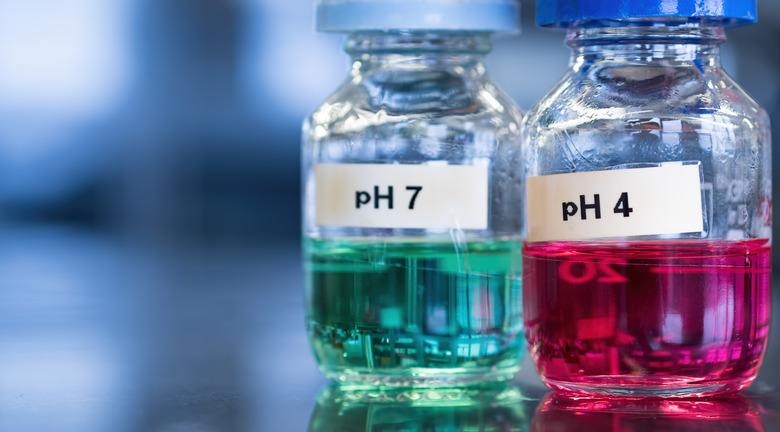How To Make A Citric Acid Buffer Solution
A buffer solution is a mixture of a weak acid and its conjugate alkali, or vice versa. Its pH barely changes when small amounts of an acid or an alkali are added to it. This makes it crucial for lab experiments when pH levels must be kept constant.
TL;DR (Too Long; Didn't Read)
To make a citric acid buffer solution, mix citric acid with sodium citrate (a conjugate base) in deionized or distilled water, stirring the solution until you reach your desired pH level.
Le Chatelier's Principle
Le Chatelier's Principle
In 1884 the French chemist and engineer Henry-Louis Le Chatelier offered one of the central concepts of chemical equilibria, known thereafter as Le Chatelier's principle. It describes what happens to a system when something temporarily removes it from equilibrium. One way to do this is to change the concentration of one of the components of a reaction. pH is an inverse measure of the hydrogen ion concentration of a solution; solutions with a high concentration of hydrogen ions have a low pH, and solutions with a low concentrations of H+ ions have a high pH. A buffer solution has to contain substances that take away any hydrogen ions or hydroxide ions added to it, or the pH of the solution will shift. When you make an acidic buffer solution, you tip the position of the equilibrium further to one side. When you make an alkaline buffer solution, the equilibrium position moves back toward the other side. The buffer works by counteracting the change and re-establishing an equilibrium.
Citric Acid vs. Sodium Citrate
Citric Acid vs. Sodium Citrate
A citric acid buffer works in the same way as a sodium citrate buffer. To make this, you need both citric acid and the conjugate base, sodium citrate. Citric acid is a weak organic acid that occurs naturally in citrus fruits and can efficiently maintain a pH from 3 to 6.2. Sodium citrate is the sodium salt of citric acid., with alkanizing activity. It only takes a few minutes to make a sodium citrate buffer.
Making the Buffer Solution
Making the Buffer Solution
Mix 7.2 ml of citric acid and 42.8 ml of sodium citrate. Add enough deionized water to bring the total volume of the mixture to 100 ml. Water used in buffers should be as pure as possible (either deionized or distilled) to maintain a neutral pH (i.e., to ensure the water doesn't affect the pH level). Use a sensitive pH meter to adjust the pH and achieve your desired level. Wear safety goggle and gloves at all times. Adult supervision is recommended for science experiments.
Cite This Article
MLA
Gillespie, Claire. "How To Make A Citric Acid Buffer Solution" sciencing.com, https://www.sciencing.com/make-citric-acid-buffer-solution-5336862/. 11 April 2018.
APA
Gillespie, Claire. (2018, April 11). How To Make A Citric Acid Buffer Solution. sciencing.com. Retrieved from https://www.sciencing.com/make-citric-acid-buffer-solution-5336862/
Chicago
Gillespie, Claire. How To Make A Citric Acid Buffer Solution last modified March 24, 2022. https://www.sciencing.com/make-citric-acid-buffer-solution-5336862/
